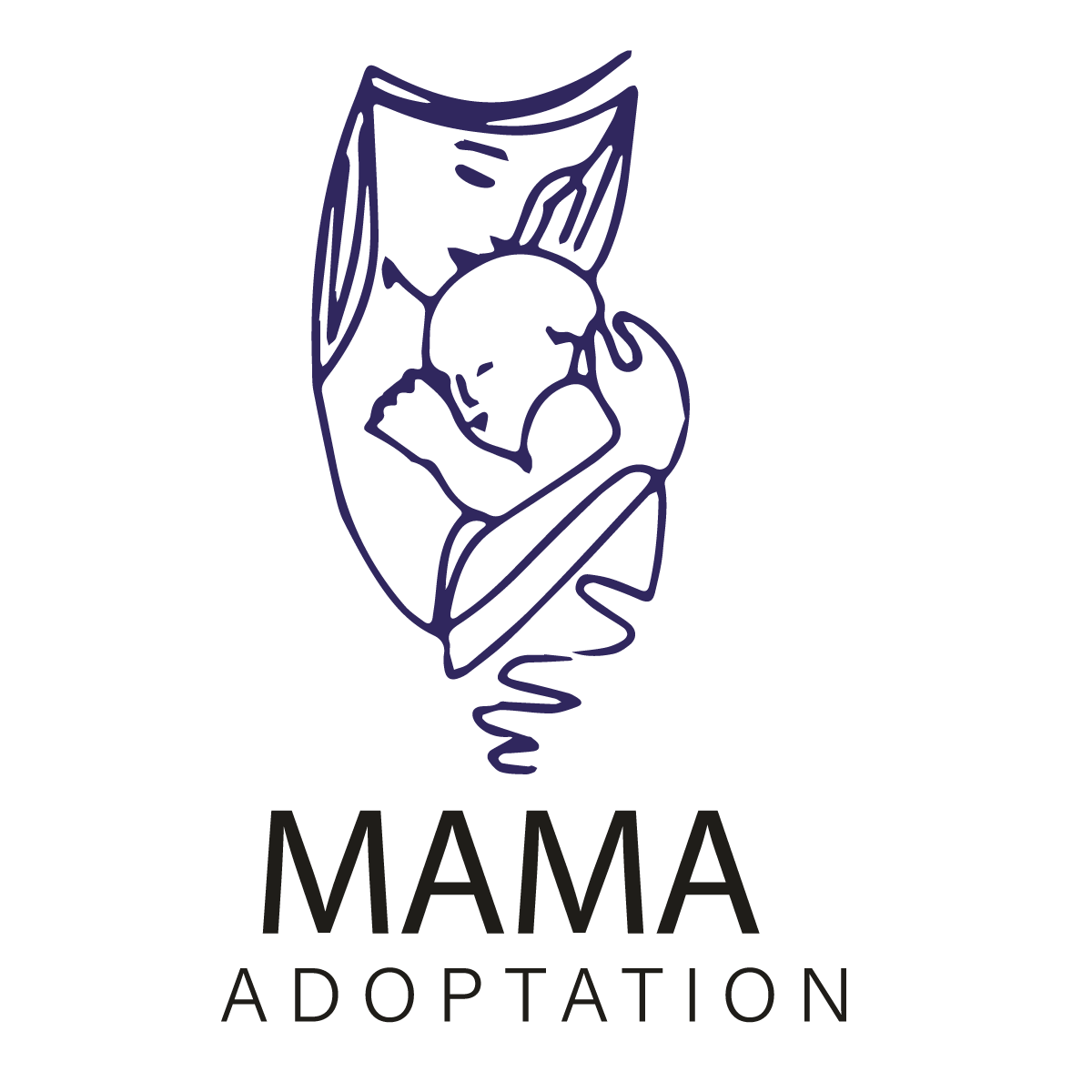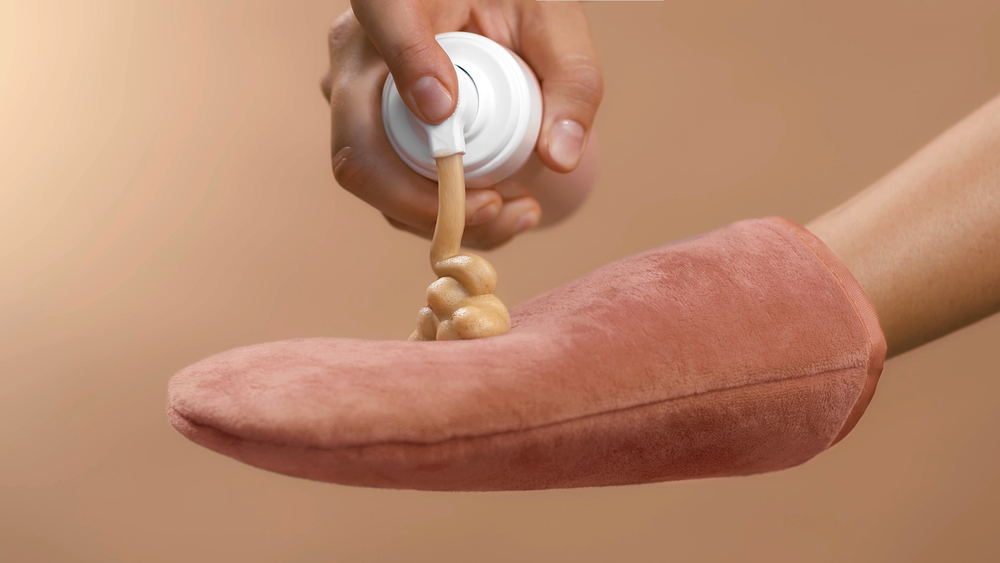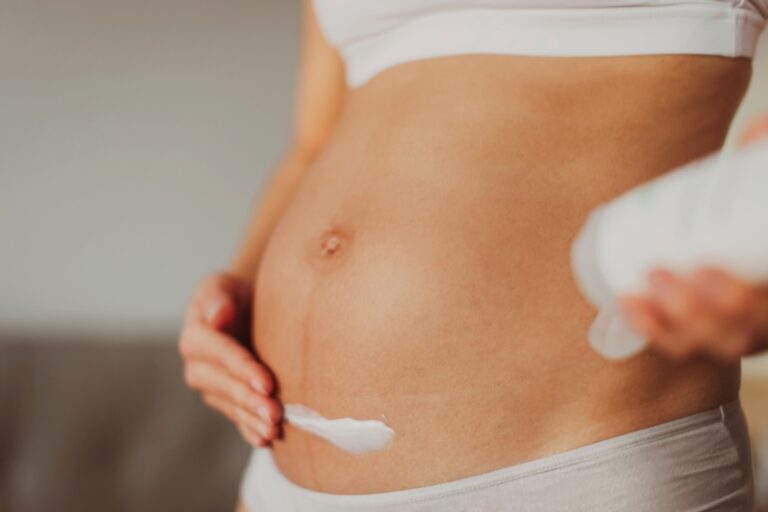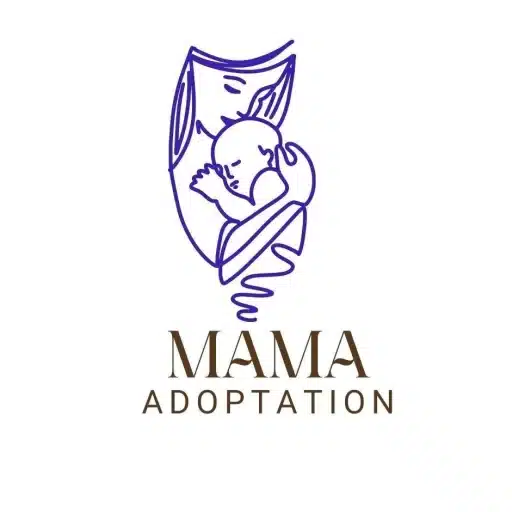Pregnancy safe self tanner may sound like an oxymoron – after all, pregnancy is a time to be extra cautious. But many expectant mothers crave that healthy, sun-kissed glow without the risks.
- Pregnancy Safe Self Tanner: Risks of UV Exposure
- Pregnancy Safe Self Tanner vs Spray Tan: Can You Get a Spray Tan While Pregnant?
- Pregnancy Safe Self Tanner: Organic, Vegan and Cruelty-Free Options
- Pregnancy Safe Self Tanner: Top Product Recommendations
- Ingredients to Look For – and to Avoid
- Self Tanning Lotion For Covering Stretch Marks and Other Tips
- FAQs
- Wrapping Up
Getting an actual tan from the sun or tanning beds can lead to prenatal sunburn, overheating, and dehydration – all of which doctors warn can cause complications.
For example, studies show that severe sunburn can raise core body temperature and dehydration during pregnancy may trigger uterine contractions or even preterm labor.
Instead, using a DHA-based self-tanning lotion or foam lets you achieve a bronzed look safely. Since DHA only reacts with the outer layer of dead skin cells, very little of it penetrates into your body.
In fact, U.S. health authorities note that DHA is FDA-approved for external tanning. When applied properly, pregnancy-safe self tanners give you color without UV damage or overheating.
A self-tanner applied topically can give expectant moms a sunless glow without stepping out into harsh sun. This way you skip the sunburn and UV exposure entirely. Plus, these products often double as rich moisturizers—a bonus for itchy, dry skin common in pregnancy.
Overall, self tanners are considered safe during pregnancy as long as they contain no known toxic additives.
Pregnancy Safe Self Tanner: Risks of UV Exposure
Most obstetricians recommend strict sun protection for pregnant women—think SPF, hats, and lots of shade. Lying out in the sun or using a tanning bed can dangerously increase your body temperature and blood pressure.
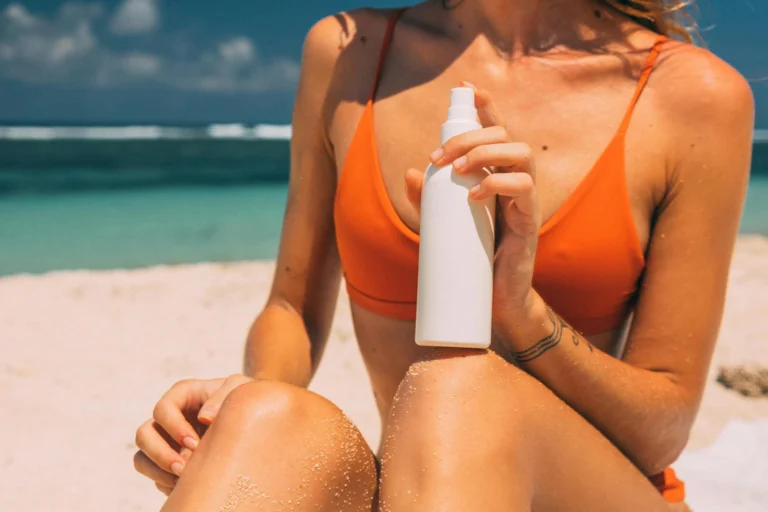
A severe sunburn during pregnancy isn’t just painful, it can impair temperature regulation, risking heatstroke or dehydration. In fact, experts note that overheating (for example, a fever over 102°F) can lead to dizziness, dehydration, or uterine contractions.
Sun exposure also worsens melasma (“pregnancy mask”) and makes skin extra sensitive.
Even indoor tanning beds are strongly discouraged. They flood the skin with UVA/UVB rays and heat. According to medical sources, overheating is the biggest risk associated with tanning beds, even though they won’t directly harm the unborn child.
Elevated core temperature can cause complications like fainting or preterm labor, which is why “the biggest concern” with tanning beds in pregnancy is heat, not the baby’s immediate health.
So, skip the sunbed and sun with SPF. Choose a self-tanner that is safe for pregnant women instead.
Pregnancy Safe Self Tanner vs Spray Tan: Can You Get a Spray Tan While Pregnant?
Many moms-to-be wonder, “Can you get a spray tan while pregnant?” The answer is yes, but with caution. Spray tans still use DHA, but since it’s aerosolized, there’s a risk of inhaling the mist.
Pregnancy experts advise avoiding full-body spray booths—especially in the first trimester. If you do get a spray tan, wear a mask, goggles, and ventilate the room to minimize inhalation.
Alternatively, pregnant women often prefer lotion, mousse, or foam tanners. These give you control and won’t fill the air with fumes, and avoid accidental splashes on delicate areas.
Guidelines for Safe Self-Tanning
- Choose the right formula. Use lotion, mousse, or foam tanners rather than aerosols. These are easier to apply evenly and let you avoid any extra chemicals.
- Check ingredients. Look for products free of parabens, phthalates, formaldehyde releasers, and strong synthetic fragrances.
- Patch test first. Skin can become sensitive during pregnancy, even with mild formulas. Apply a small dab on your arm 24 hours before full use. If you see itching, redness, or a rash, skip it.
- Wear gloves or use an applicator. This keeps your hands from looking tan. It also cuts your exposure to the product ingredients.
- Avoid sensitive areas. DHA is FDA-approved only for normal skin, not mucous membranes. Keep tanner away from eyes, lips, nostrils, and genital areas. If any lands there, wipe it off immediately.
- Ventilate if spraying. If you do choose a spray, wear a respirator mask and do it in a well-ventilated space. Cover your nose and mouth, and consider having a partner help spray tricky areas.
Besides spray equipment, tanning beds or sunbeds should be avoided entirely. The UV and heat are unsafe for anyone, let alone a pregnant body. There’s no safe way to “mix” self tanner use with UV tanning. If you want color, use the lotion – do not bake under UV rays!
Pregnancy Safe Self Tanner: Organic, Vegan and Cruelty-Free Options
Many women look for non-toxic and clean labels while shopping. You might see terms like “organic self tanner,” “vegan DHA,” or “cruelty-free fake tan.” These often mean the product avoids animal testing and uses plant-based ingredients.

For example, brands like Beauty By Earth and Luna Bronze make their tanners from botanical extracts and food-grade DHA.
Cross-check any tanner with a cosmetics database to be safe; a low hazard score of 1 or 2 is preferable. The less additives and preservatives used, the better.
Also prefer fragrance-free formulas, as synthetic scents can irritate hormonally sensitive skin. In short, a pregnancy safe tanning lotion is one that’s paraben-free, phthalate-free, and gentle on skin. If it’s also certified organic and cruelty-free, that’s a nice bonus (though not strictly required).
Pregnancy Safe Self Tanner: Top Product Recommendations
There’s no single “best” tanner, but many expecting moms swear by a few go-tos. Here are some popular pregnancy-friendly picks:
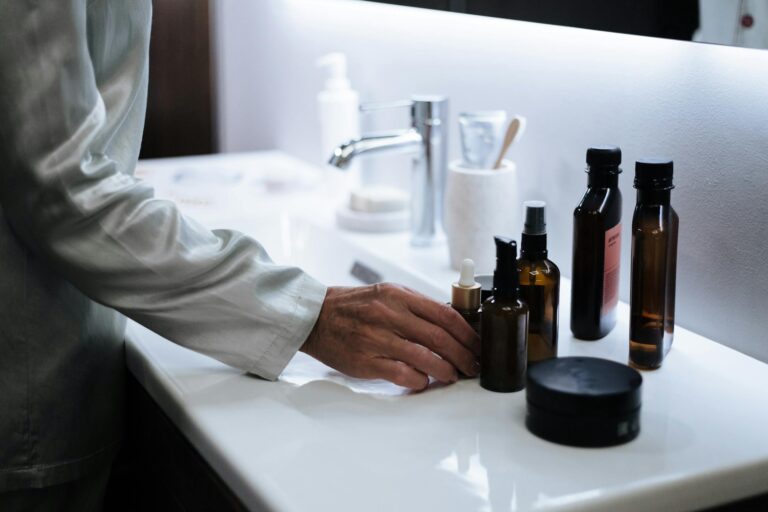
- Bondi Sands Self Tanning Foam – A lightweight, easy-to-spread mousse that gives a natural bronze tone. (No parabens, and it rinses out of everything easily.)
- Beauty By Earth Self Tanner – An organic, vegan lotion that many moms love for its gentle formula and moisturizing oils. It has a low hazard profile.
- Jergens Natural Glow Mousse – A drugstore favorite: gradual tan with conditioning butters. Fragrance-free versions are suitable for pregnancy.
- St. Tropez Express Bronzing Mousse – A more high-end mousse; streak-free and long-lasting. Check the ingredient list, but many report it safe for pregnancy.
- Vita Liberata Organic Gradual Tanner – An all-natural, ultra-hydrating lotion that builds color slowly. No synthetic chemicals, and cruelty-free.
- Golden Star Beauty Self Tanner Lotion – A certified organic and vegan lotion (with hyaluronic acid) that reviewers say is pregnancy-friendly. It’s designed to be mild on sensitive skin.
(For each product, be sure to review the label or manufacturer’s pregnancy guidance before use.)
Also note that tinted bronzing body makeup can be a temporary alternative to self-tanners – they wash off at bath time. Some moms even use tinted lotions marketed for stretch mark coverage, which can even out tone and conceal baby bumps.
Ingredients to Look For – and to Avoid
As you shop, keep an eye on the label.
Look for: DHA (the active tanning ingredient), moisturizing ingredients (aloe, oils, hyaluronic acid), natural color boosters (black carrot, cocoa), and simple preservatives like phenoxyethanol.
Avoid: any formulas with retinoids or high-dose Vitamin A (linked to birth defects), salicylic acid, and strong chemical sunscreens (like oxybenzone).
Pregnancy guides specifically advise against tanning pills (they often contain canthaxanthin) and recommend against tanning booths.
According to pregnancy care experts, the safest self-tanners are those free of endocrine-disrupting additives (EDCs).
Self Tanning Lotion For Covering Stretch Marks and Other Tips

One benefit of a self-tanner can be helping camouflage stretch marks or uneven tone. A tinted tanning lotion will darken the skin around blemishes, making them less noticeable. Brands like Bondi Sands even mention that their tanner can help even out the appearance of stretch marks.
Just remember: treat a self-tanner as makeup—apply it evenly and let it dry completely before dressing. And never use it internally on mucous areas or on broken skin.
Other quick tips for glowing safely: exfoliate gently before tanning for best color, wear old clothing until the tanner sets, and keep applying moisturizer daily. Always wash hands thoroughly after application to avoid orange palms. And drink lots of water—it’ll help your skin stay healthy and tan evenly.
FAQs
1. Are any self-tanners safe during pregnancy?
Yes, self-tanners that use DHA and are applied topically (like lotions or mousses) are generally considered safe during pregnancy. Avoid sprays to minimize inhalation risk.
2. How can I tan in the sun while pregnant?
It’s best to avoid sun tanning during pregnancy due to risks of overheating and sunburn during pregnancy. If you must be in the sun, use broad-spectrum SPF, wear a hat, and limit exposure.
3. Do all fake tans contain DHA?
Most fake tans contain DHA as the main active ingredient. However, some use alternative natural colorants. Always check the label if you’re concerned about ingredients during pregnancy.
4. How to make your legs look brown without fake tan?
You can use tinted body lotions, bronzing makeup, or body oils with shimmer for a temporary glow. Wearing nude or bronze-toned tights can also enhance the look naturally.
5. Does Fake Tan Affect Your Ovaries?
No, fake tan doesn’t affect your ovaries. Most self-tanners, including the safe self tanner for pregnancy, only affect the outermost layer of your skin. These products do not penetrate deep enough to interfere with internal organs like the ovaries.
6. Can You Use Self Tanner and Tanning Bed Together?
It’s best to avoid tanning beds entirely during pregnancy. Use of self tanners or pregnancy-safe fake tan is a better alternative for a glowing complexion without the added risks of UV damage.
7. Can Self Tanner Help with Stretch Marks?
Self tanner may not prevent or fade stretch marks, but it can temporarily mask them by evening out your skin tone. Self tanning lotion for stretch marks can provide a smoother appearance by blending them into your tan.
Wrapping Up
Pregnancy doesn’t mean you have to forgo your glow. With the right precautions and by choosing a self tanner pregnancy safe formula, you can safely achieve a radiant tan without risking harmful UV damage. Make sure to read labels, select products that are free of harmful chemicals, and always use sunscreen to protect your skin. The best pregnancy-safe self-tanners are those that are organic, non-toxic, and easy to apply, offering you a healthy, glowing complexion throughout your pregnancy.
Read More……………….
Pumping Gas While Pregnant (Is It Safe To Breathe in the Fumes?)
Eye Twitching During Pregnancy Causes, Symptoms and Remedies
How to Shrink Feet After Pregnancy: A Complete Guide


